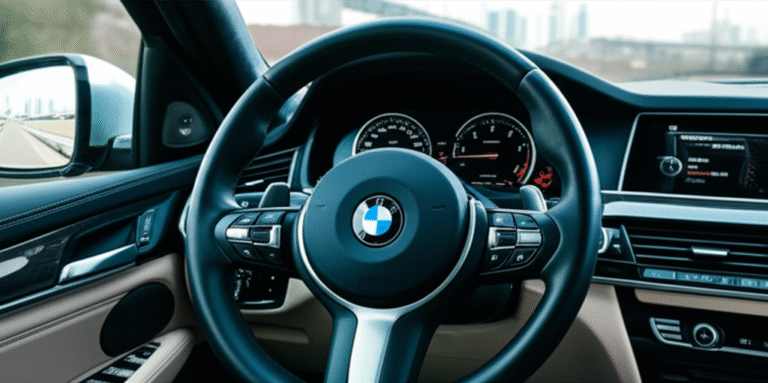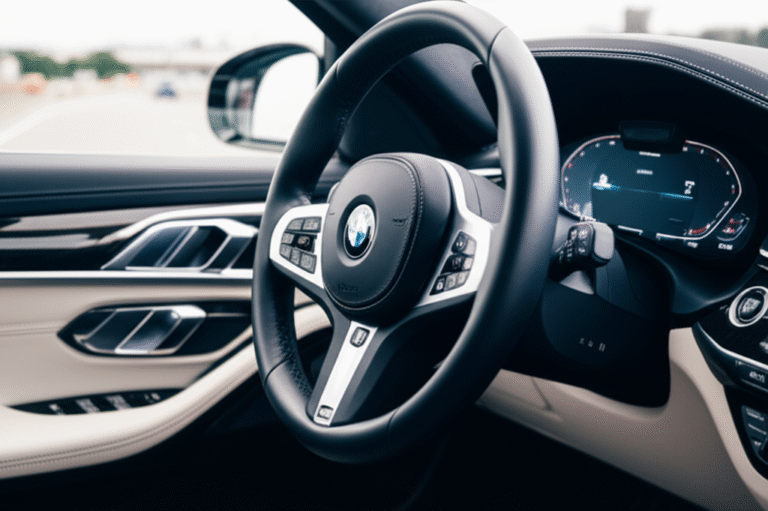BMW X7 Tyre Size: 6 Bold Facts
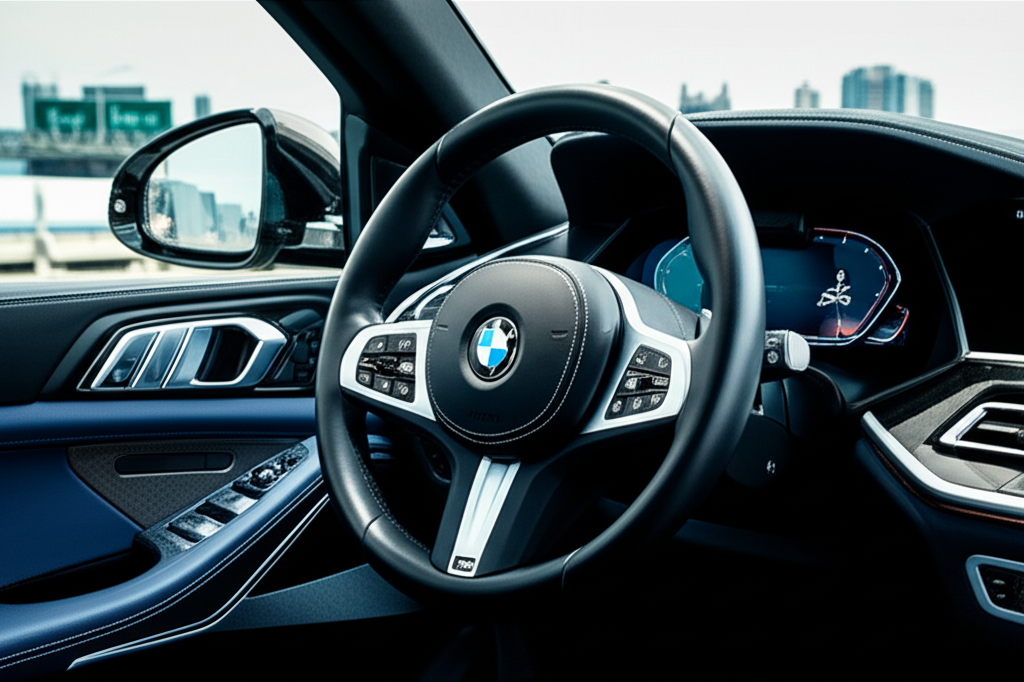
The BMW X7 tyre size varies by model year and trim, but knowing the correct specifications ensures optimal performance, safety, and ride comfort for your luxury SUV.
Key Takeaways
- Identify your specific BMW X7 model year for accurate tyre size.
- Common BMW X7 tyre sizes include 275/40R21 and 275/45R20.
- Check the driver’s side door jamb sticker for the definitive tyre size.
- Correct tyre pressure is crucial for safety and longevity.
- Consider all-season tyres for year-round performance in most US climates.
- Consult your owner’s manual for detailed tyre and wheel fitment information.
Navigating the world of automotive specifications can feel like a maze, especially when it comes to something as crucial as your BMW X7 tyre size. You’ve invested in a vehicle that offers unparalleled luxury and performance, and ensuring it rides on the correct tyres is paramount. But with different trims and model years, finding the exact BMW X7 tyre size can be confusing. Don’t worry, we’re here to demystify it all. This guide will break down the essential facts about your BMW X7’s tyre size, ensuring you have the knowledge to make informed decisions for your ride. Let’s dive into what you absolutely must know.
Understanding BMW X7 Tyre Size: The Basics
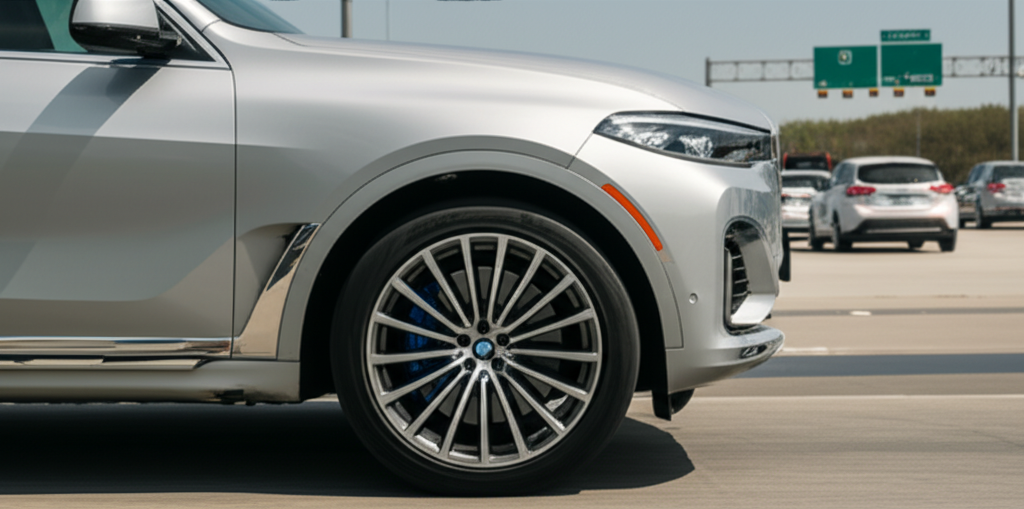
The BMW X7 is a full-size luxury SUV known for its commanding presence and sophisticated engineering. When it comes to its tyres, BMW offers a range of sizes to cater to different driving preferences and performance needs. Fundamentally, a tyre size designation like “275/40R21” tells you a lot. The first number, 275, is the tyre’s width in millimeters. The second number, 40, is the aspect ratio, meaning the tyre’s sidewall height is 40% of its width. The “R” signifies that the tyre has a radial construction, standard for modern vehicles. The final number, 21, indicates the diameter of the wheel in inches that the tyre is designed to fit. Understanding these components is your first step in ensuring you select the right BMW X7 tyre size.
For new owners or those looking to replace their current tyres, knowing the specific BMW X7 tyre size is more than just a technical detail; it impacts fuel efficiency, handling, ride quality, and even safety. Incorrectly sized tyres can lead to a host of problems, including inaccurate speedometer readings, uneven tyre wear, compromised braking distances, and a less comfortable driving experience. Fortunately, BMW makes this information accessible. This article will present six bold facts about the BMW X7 tyre size, making it easy for you to get it right every time.
Fact 1: Your Driver’s Side Door Jamb Holds the Key
Perhaps the most straightforward and reliable place to find the correct BMW X7 tyre size for your specific vehicle is on a sticker located on the driver’s side door jamb. When you open the driver’s door, look along the frame where the door closes. You’ll typically find a white and yellow sticker that provides vital information about your vehicle, including the recommended tyre sizes and the corresponding inflation pressures. This sticker is tailored to your exact car configuration and is the definitive source for standard tyre fitment. It’s like having a direct line to BMW’s engineering team for your specific SUV.
This sticker is a crucial piece of equipment for any car owner in the USA. It’s not just about the tyre dimensions; it also specifies the recommended tyre pressure for both the front and rear tyres, often for both normal load and fully loaded conditions. Maintaining the correct tyre pressure, as indicated on this sticker, is essential for safety, tyre longevity, and optimal fuel economy. Forgetting to check this sticker means you might be relying on guesswork, which is never a good idea when it comes to your vehicle’s performance and safety. Always refer to this sticker first when you need to know your BMW X7 tyre size or its proper inflation.
Fact 2: Common BMW X7 Tyre Sizes Explained
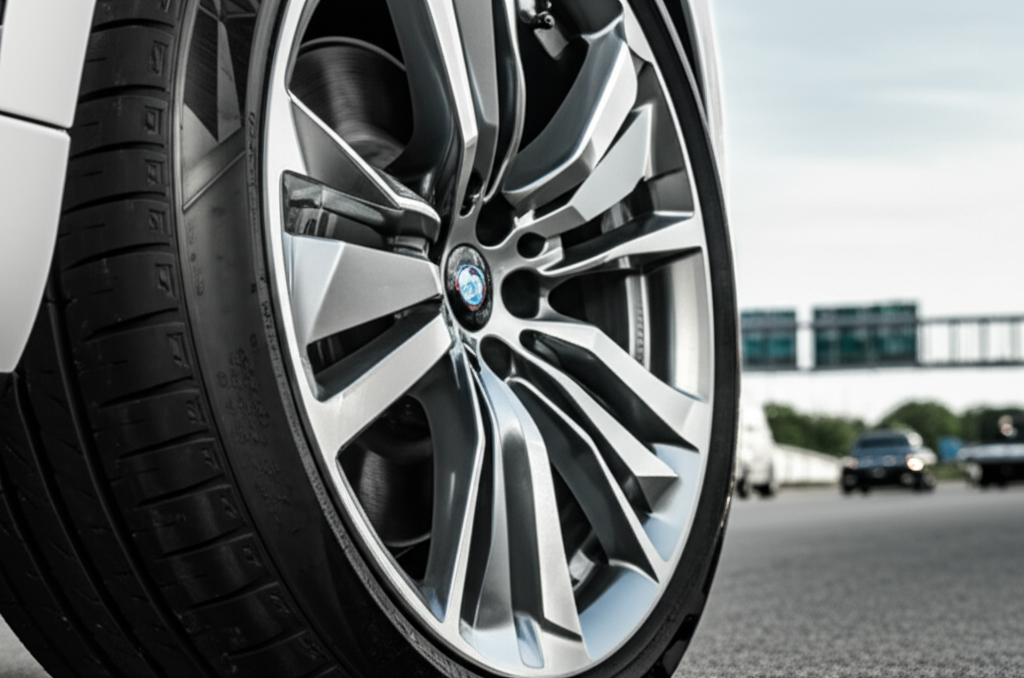
The BMW X7 often comes equipped with larger diameter wheels, reflecting its status as a premium, full-size SUV. This means you’ll frequently encounter BMW X7 tyre sizes that are designed for 21-inch or even 22-inch wheels. Some of the most common tyre sizes you’ll find include:
- 275/40R21: This is a very popular size for many BMW X7 models, including various configurations of the xDrive40i and M50i. It offers a good balance of ride comfort and sporty handling, with a tire sidewall that’s 40% of its 275mm width.
- 275/45R20: You might see this size on earlier models or specific trims where a slightly higher profile tyre is fitted for enhanced comfort. The 45 aspect ratio provides a bit more cushioning compared to the 40 series.
- 275/35R22: For those opting for the largest wheel sizes, the 22-inch wheels often come with tyres like this, offering a more aggressive stance and sharper handling, though potentially with a firmer ride.
It’s important to note that these are just common examples. BMW might offer different wheel and tyre packages as optional equipment, or specific model years might have subtle variations. For instance, the M Sport package often dictates larger wheel sizes and lower-profile tyres. Always cross-reference this information with your vehicle’s specific identification for the most accurate BMW X7 tyre size.
Fact 3: The Owner’s Manual is Your Tire Bible
While the door jamb sticker is a quick reference, your BMW X7 owner’s manual is the ultimate authority on all things related to your vehicle, including its tyre and wheel specifications. This comprehensive document provides detailed information not only on the standard BMW X7 tyre sizes but also on variations, considerations for different driving conditions, and even advice on selecting winter tyres if needed. It’s the most detailed resource you’ll have for understanding your vehicle’s engineering and maintenance requirements.
The owner’s manual often includes tables that clearly outline recommended tyre sizes for each model variant and production year. It may also discuss the implications of choosing different wheel sizes or tyre types. For example, it might explain how larger wheels can affect your vehicle’s dynamics or how specific tyre tread patterns are optimized for certain climates prevalent in the USA, from the snowy winters of New England to the arid summers of the Southwest. Referencing your owner’s manual ensures you’re aligning with BMW’s design intent for your X7, maintaining its premium driving experience and safety standards. You can usually find a digital version of your owner’s manual on BMW’s official USA website if you no longer have the physical copy.
Fact 4: Tyre Pressure is Non-Negotiable for Performance and Safety
Choosing the correct BMW X7 tyre size is only half the battle; maintaining the correct tyre pressure is equally, if not more, critical. As mentioned, your door jamb sticker and owner’s manual specify the recommended pressures. These figures are not arbitrary. They are carefully calculated by BMW engineers to ensure:
- Optimal Handling and Stability: Correct pressures ensure the tyre sidewalls flex as designed, providing predictable steering response and stability, especially important for a large and powerful SUV like the X7.
- Even Tyre Wear: Underinflated tyres wear out faster on the outer edges, while overinflated tyres wear out faster in the center. Proper inflation ensures even wear across the tread, maximizing the life of your tyres.
- Fuel Efficiency: Underinflated tyres increase rolling resistance, meaning your engine has to work harder, leading to higher fuel consumption – a significant factor for any driver in the USA.
- Braking Performance: Correct tyre pressure contributes to the tyre’s ability to maintain optimal contact with the road surface, crucial for effective braking.
Regularly checking your tyre pressure, at least once a month and before long trips, is a simple yet vital maintenance task. Use a reliable tyre pressure gauge. Remember that tyre pressure can fluctuate with temperature changes; for every 10°F (5.5°C) drop or rise in ambient temperature, tyre pressure can change by about 1 PSI (0.07 bar). Most modern X7 models also feature a Tyre Pressure Monitoring System (TPMS) that alerts you to significant pressure drops, but manual checks are still recommended.
Fact 5: All-Season Tyres: The Versatile Choice for American Drivers
For most drivers in the USA, all-season tyres offer the best combination of features for year-round driving. When selecting an all-season tyre for your BMW X7, you’re looking for a tyre that can perform reliably in a variety of conditions – from hot summer roads to light snow and rain. These tyres are designed with a tread compound that remains flexible in colder temperatures and a tread pattern that provides good traction in both wet and dry conditions.
When choosing an all-season BMW X7 tyre size, ensure it meets or exceeds the load index and speed rating specified by BMW. These ratings are critical for safety and performance. For example, a tyre might be listed as 275/40R21 107Y XL. Here, 107 is the load index (maximum weight the tyre can support), and Y is the speed rating (maximum speed the tyre can sustain). XL stands for “Extra Load,” indicating a reinforced sidewall for heavier vehicles. Consulting resources like NHTSA (National Highway Traffic Safety Administration) can provide further insights into tyre safety standards and ratings in the USA.
While all-season tyres are versatile, they are a compromise. In regions with severe winter weather, dedicated winter tyres are highly recommended for optimal safety and performance. Many BMW X7 owners in snowy climates opt to have a set of winter wheels and tyres that they swap onto their vehicle during the colder months.
Fact 6: Understanding Load Index and Speed Rating is Crucial
Beyond the basic BMW X7 tyre size, the Load Index and Speed Rating are critical safety specifications that dictate the tyre’s capacity to carry weight and its maximum safe operating speed. Overlooking these can have serious consequences for your safety and the integrity of your vehicle.
Here’s a breakdown:
| Specification | Meaning | Importance for BMW X7 |
|---|---|---|
| Load Index | A numerical code indicating the maximum load (weight) a tyre can carry at its specified inflation pressure. For instance, a load index of 107 corresponds to a maximum load of 975 kg (2,150 lbs) per tyre. | The BMW X7 is a heavy SUV. Using tyres with a load index lower than specified can lead to tyre failure, overheating, and potential accidents. Always match or exceed the manufacturer’s recommended load index. |
| Speed Rating | An alphabetical code indicating the maximum speed at which a tyre can carry its specified load. Common ratings include H (130 mph), V (149 mph), W (168 mph), and Y (186 mph). | BMW X7 models are capable of higher speeds. Using a tyre with a speed rating lower than what the vehicle is designed for can result in reduced handling performance and increased risk of tyre failure at higher speeds. |
You can find the correct load index and speed rating for your BMW X7 on the same door jamb sticker or in your owner’s manual. When purchasing replacement tyres, ensure these specifications are met or exceeded. Reputable tyre retailers and online resources can help you identify compatible tyres that meet these stringent requirements. For example, if your X7 originally came with a Y-rated tyre, you should replace it with another Y-rated tyre or one with a higher speed rating. Never choose a tyre with a lower speed rating.
Considering Different Wheel Sizes and Their Impact
The BMW X7 is available with a range of wheel sizes, from 20 inches up to 22 inches. Moving to a larger wheel size, such as from a 20-inch to a 22-inch rim, typically means a lower-profile tyre (a smaller aspect ratio). While larger wheels can offer a sportier aesthetic and potentially sharper handling due to less sidewall flex, they also have downsides:
- Ride Comfort: Lower-profile tyres have less air volume and sidewall cushioning, leading to a firmer ride and transmitting more road imperfections into the cabin.
- Susceptibility to Damage: The reduced sidewall height makes the tyres and wheels more vulnerable to damage from potholes and road debris.
- Cost: Larger wheel and tyre packages are generally more expensive to purchase and replace.
- Speedometer Accuracy: If the overall diameter of the new tyre/wheel combination differs significantly from the OE (Original Equipment) specification, it can affect the accuracy of your speedometer and odometer. BMW X7 tyre size changes should aim to maintain a similar overall diameter.
If you are considering upgrading your wheels, it is essential to ensure that the new wheel diameter, width, offset, and the corresponding tyre size maintain an overall tyre diameter as close as possible to the original specification. Many online tyre fitment guides can help you calculate the overall diameter of different tyre sizes.
Pro Tip: When changing your BMW X7 tyre size or wheel size, always ensure that the new combination is compatible with your vehicle’s braking system and suspension components. Consult a professional installer or refer to BMW’s technical specifications.
When to Consider Performance vs. Comfort Tyres
Your driving style and priorities will influence whether you lean towards performance or comfort-oriented tyres for your BMW X7. Performance tyres, often found on higher trims or as optional upgrades, typically feature a lower aspect ratio and a tread compound designed for maximum grip and responsiveness, especially in dry conditions. They contribute to sharper cornering and a more connected feel to the road.
On the other hand, comfort-oriented tyres, which might be standard on some trims or favour a higher aspect ratio (e.g., a 45 or 50 series), prioritize a smooth and quiet ride. They excel at absorbing road noise and impacts, making long journeys more relaxing. For the BMW X7, which is designed as a luxury flagship, a balance is often struck to provide both a comfortable ride and capable performance.
If you frequently drive on winding roads or enjoy spirited driving, you might opt for tyres that lean towards the performance end of the spectrum. If your priority is a serene and quiet cabin experience for commuting or family road trips, comfort-focused tyres will be more suitable. Always ensure the tyres you select meet the necessary load and speed ratings for your specific BMW X7 model.
Frequently Asked Questions (FAQs)
Q1: What is the standard BMW X7 tyre size for a 2023 model?
For a 2023 BMW X7, common tyre sizes include 275/40R21 for both front and rear. Some trims might offer 275/45R20 or larger 22-inch options. Always verify with your vehicle’s door jamb sticker or owner’s manual for the exact specification.
Q2: Can I put different size tyres on the front and rear of my BMW X7?
Most BMW X7 models use the same tyre size for both the front and rear axles. Some high-performance variants might have staggered fitments (different sizes front and rear), but this is less common for the X7. Always adhere to BMW’s recommendations on tyre fitment to maintain the vehicle’s driving dynamics and xDrive system integrity.
Q3: How often should I check my BMW X7 tyre pressure?
You should check your BMW X7 tyre pressure at least once a month and before any long journeys. Tyre pressure can change with temperature, and slow leaks can occur over time. Regularly scheduled checks are essential for safety and tyre longevity.
Q4: What does the “XL” on a BMW X7 tyre mean?
“XL” stands for “Extra Load.” It indicates that the tyre has a reinforced sidewall and a higher load-carrying capacity than a standard load tyre. Since the BMW X7 is a heavy vehicle, many of its original equipment tyres will be marked as XL.
Q5: Are run-flat tyres standard on the BMW X7?
Yes, most new BMW X7 models come equipped with run-flat tyres as standard. Run-flat tyres allow you to continue driving for a limited distance at reduced speed even after a puncture, giving you time to reach a safe location or repair shop. They have reinforced sidewalls to support the vehicle’s weight without air pressure.
Q6: Where can I buy BMW X7 tyres in the USA?
You can purchase BMW X7 tyres from authorized BMW dealerships, major tyre retailers such as Discount Tire, America’s Tire, Tire Rack, Costco Automotive, and independent tyre shops across the USA. Online retailers also offer a wide selection, often with convenient delivery and installation options.
Q7: What happens if I use tyres with the wrong BMW X7 tyre size?
Using the wrong BMW X7 tyre size can lead to several problems, including inaccurate speedometer and odometer readings, compromised vehicle handling and stability, uneven tyre wear, reduced fuel efficiency, and potential damage to the drivetrain components, especially the xDrive all-wheel-drive system. It can also void your warranty in some cases.
Conclusion
Understanding your BMW X7 tyre size is fundamental to maintaining the performance, safety, and luxury that this exceptional SUV offers. From the crucial information on your driver’s side door jamb to the detailed specifications in your owner’s manual, you now possess the knowledge to confidently identify and select the correct tyres. Remember that common sizes like 275/40R21 are prevalent, but always confirm for your specific model. Beyond just the size, paying attention to load index, speed rating, and maintaining proper tyre pressure are non-negotiable steps for a safe and enjoyable driving experience on American roads. By adhering to these bold facts, you ensure your BMW X7 continues to deliver its renowned blend of power, comfort, and sophisticated driving dynamics.

